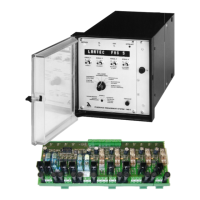12
General Information FMS Operating Principle
Start without pilot burner:
The main valves open and remain activated together with the ignition
transformer for the duration of the safety period. During this time the flame
signal appears.
Start with pilot burner:
The ignition valve and main gas 1 are opened. The pilot flame forms and
st
the flame signal appears. Once the 1 safety period has elapsed, the pilot
burner burns on its own. The main gas 2 then opens and remains activated
nd
in parallel with the ignition valve for the duration of the 2 safety period.
When this period has elapsed the ignition valve closes again.
When ignition is completed the re-circulation duct and the flue gas damper
run to the programmed point. Correction is activated. All ducts may run to
the programmed base load point (depending on the setting selected).
The FMS remains in the base load position until control release (terminal 4)
is given.
Following control release the FMS follows the prevailing external load.
A current signal proportional to the position of the compound is emitted as
internal load (not on FMS 5).
Withdrawal of the signal/control release during operation allows the
compound to run at base or ignition load (configurable).
Withdrawal of the terminal 2 signal is followed by shutting off. The main
valves close. (In gas operation, main gas 1 first, followed by main gas 2
with an approx. 5-second delay, in order to allow the monitoring line
between the solenoid valves to burn out. In the event of a fault shut-off,
however, they both close immediately).
If configured for post-ventilation, the air ducts open again for this period.
After the configured after-burning time the FMS again checks for a period
of 5 seconds whether the flame has gone out. If not, a fault shut-off
occurs.
The FMS then goes into "OFF” mode.
Pre-ventilation suppression The pre-ventilation range can be skipped by means of the pre-ventilation
through an external signal suppression signal (terminal 1). If the signal is present straight away at
burner start-up (terminal 2 signal), the control elements run directly to the
ignition position. In order to enter the range limits, however, pre-ventilation
should be performed once after "Clear Memory”.
Pre-ventilation suppression can only occur, however, if this function is
activated via parameters.
Automatic pre-ventilation When activated by parameters, the FMS starts after regulator switch-off
suppression automatically without pre-ventilation. Pre-ventilation is only carried out now after
fault switch-off or power failure. Using this function is subject to the regulations
applicable to the facility.

